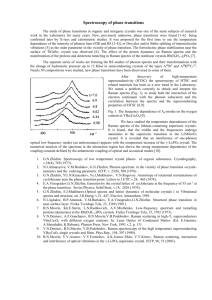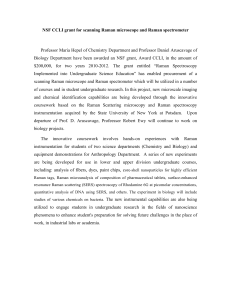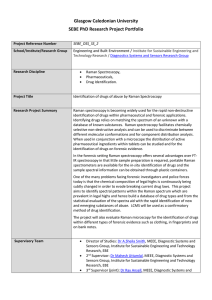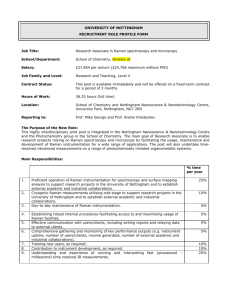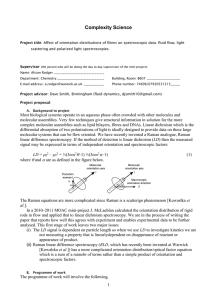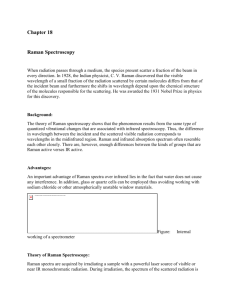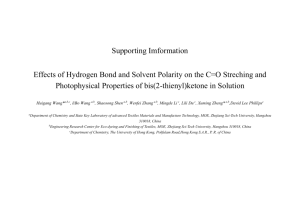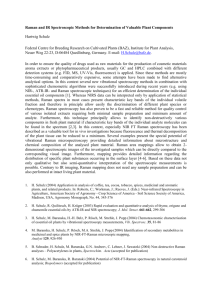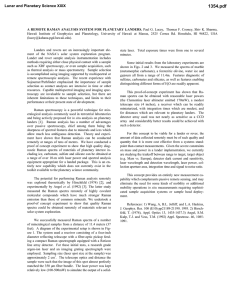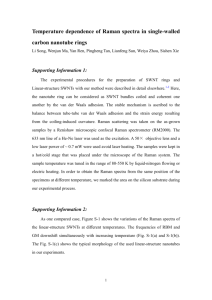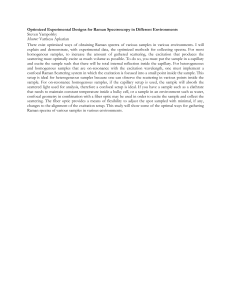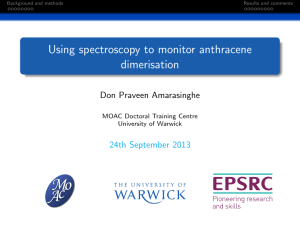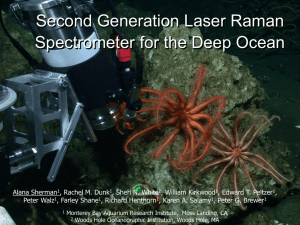CODECS 2013 Workshop San Lorenzo de El Escorial, Madrid, 18th
advertisement
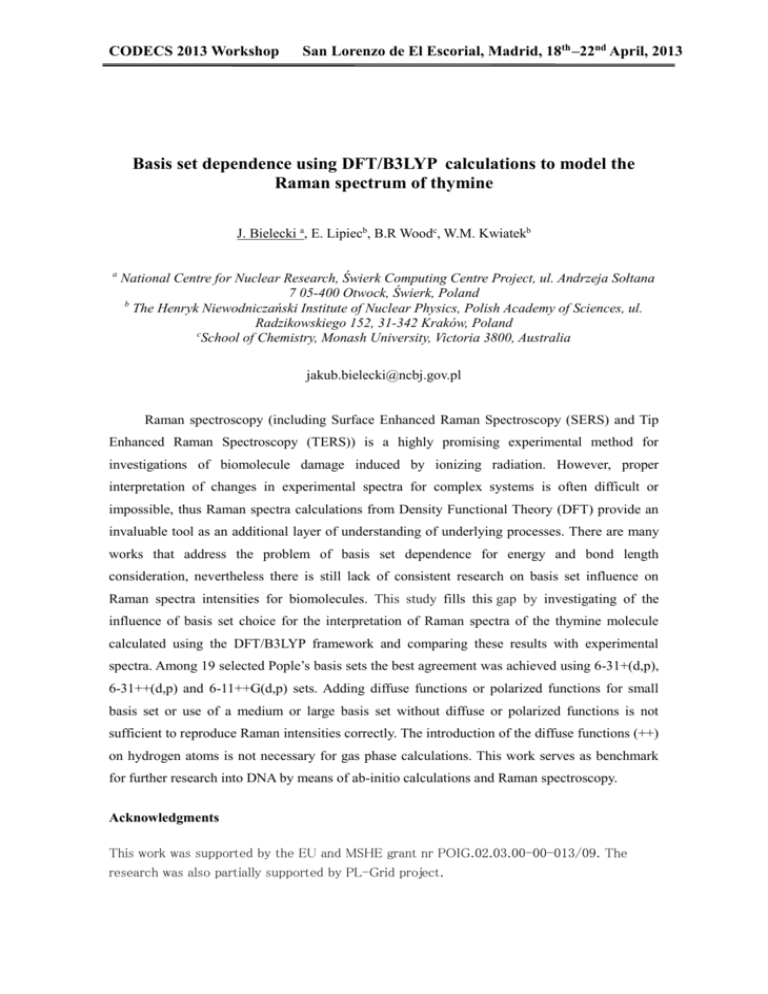
CODECS 2013 Workshop San Lorenzo de El Escorial, Madrid, 18th –22nd April, 2013 Basis set dependence using DFT/B3LYP calculations to model the Raman spectrum of thymine J. Bielecki a, E. Lipiecb, B.R Woodc, W.M. Kwiatekb a National Centre for Nuclear Research, Świerk Computing Centre Project, ul. Andrzeja Sołtana 7 05-400 Otwock, Świerk, Poland b The Henryk Niewodniczański Institute of Nuclear Physics, Polish Academy of Sciences, ul. Radzikowskiego 152, 31-342 Kraków, Poland c School of Chemistry, Monash University, Victoria 3800, Australia jakub.bielecki@ncbj.gov.pl Raman spectroscopy (including Surface Enhanced Raman Spectroscopy (SERS) and Tip Enhanced Raman Spectroscopy (TERS)) is a highly promising experimental method for investigations of biomolecule damage induced by ionizing radiation. However, proper interpretation of changes in experimental spectra for complex systems is often difficult or impossible, thus Raman spectra calculations from Density Functional Theory (DFT) provide an invaluable tool as an additional layer of understanding of underlying processes. There are many works that address the problem of basis set dependence for energy and bond length consideration, nevertheless there is still lack of consistent research on basis set influence on Raman spectra intensities for biomolecules. This study fills this gap by investigating of the influence of basis set choice for the interpretation of Raman spectra of the thymine molecule calculated using the DFT/B3LYP framework and comparing these results with experimental spectra. Among 19 selected Pople’s basis sets the best agreement was achieved using 6-31+(d,p), 6-31++(d,p) and 6-11++G(d,p) sets. Adding diffuse functions or polarized functions for small basis set or use of a medium or large basis set without diffuse or polarized functions is not sufficient to reproduce Raman intensities correctly. The introduction of the diffuse functions (++) on hydrogen atoms is not necessary for gas phase calculations. This work serves as benchmark for further research into DNA by means of ab-initio calculations and Raman spectroscopy. Acknowledgments This work was supported by the EU and MSHE grant nr POIG.02.03.00-00-013/09. The research was also partially supported by PL-Grid project.






